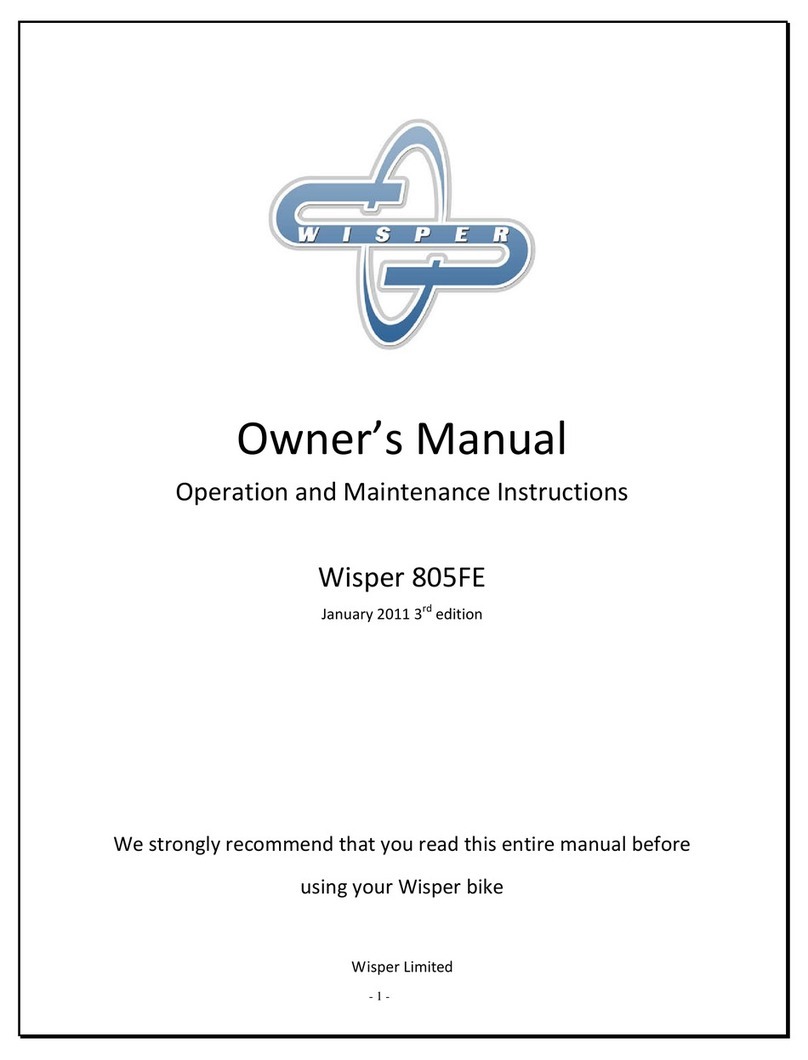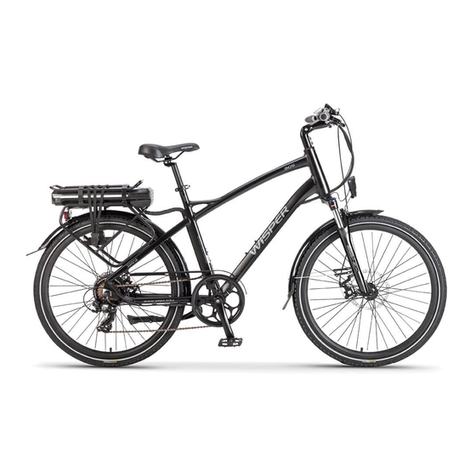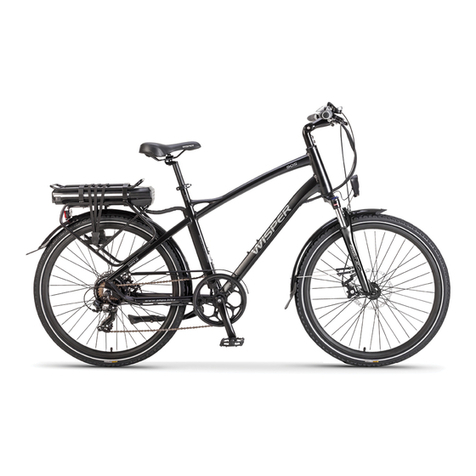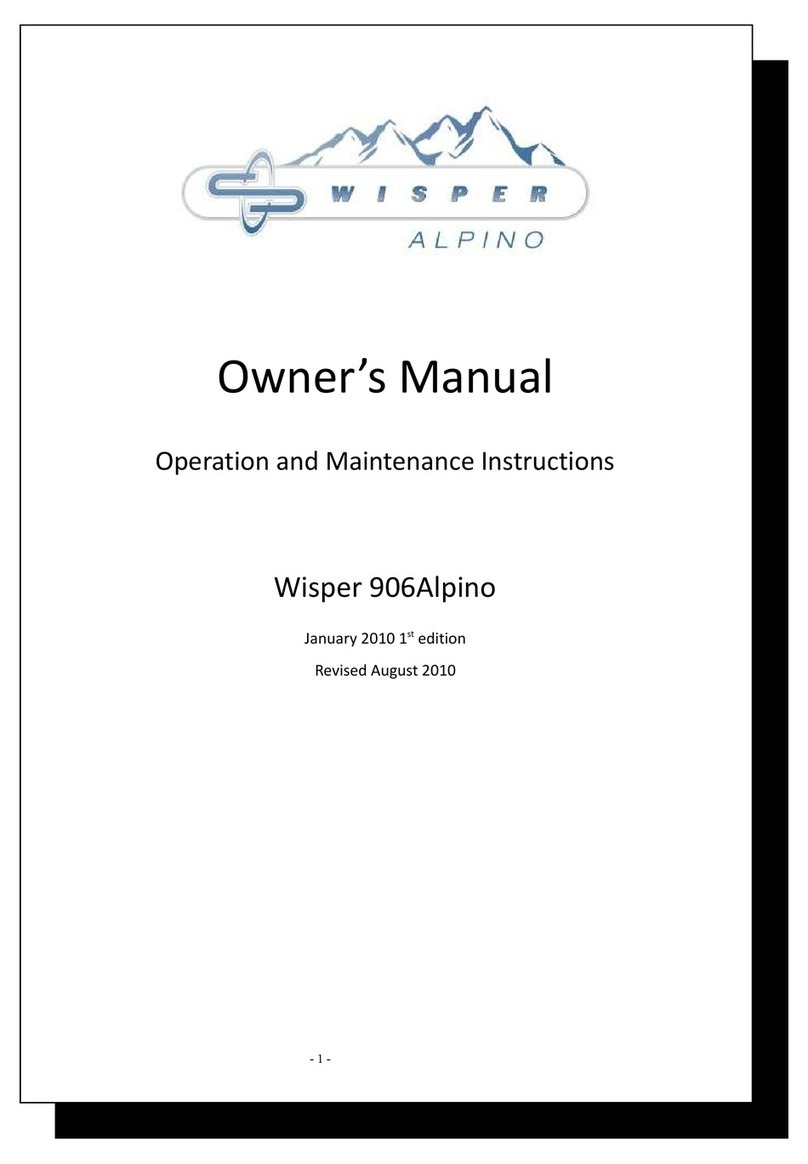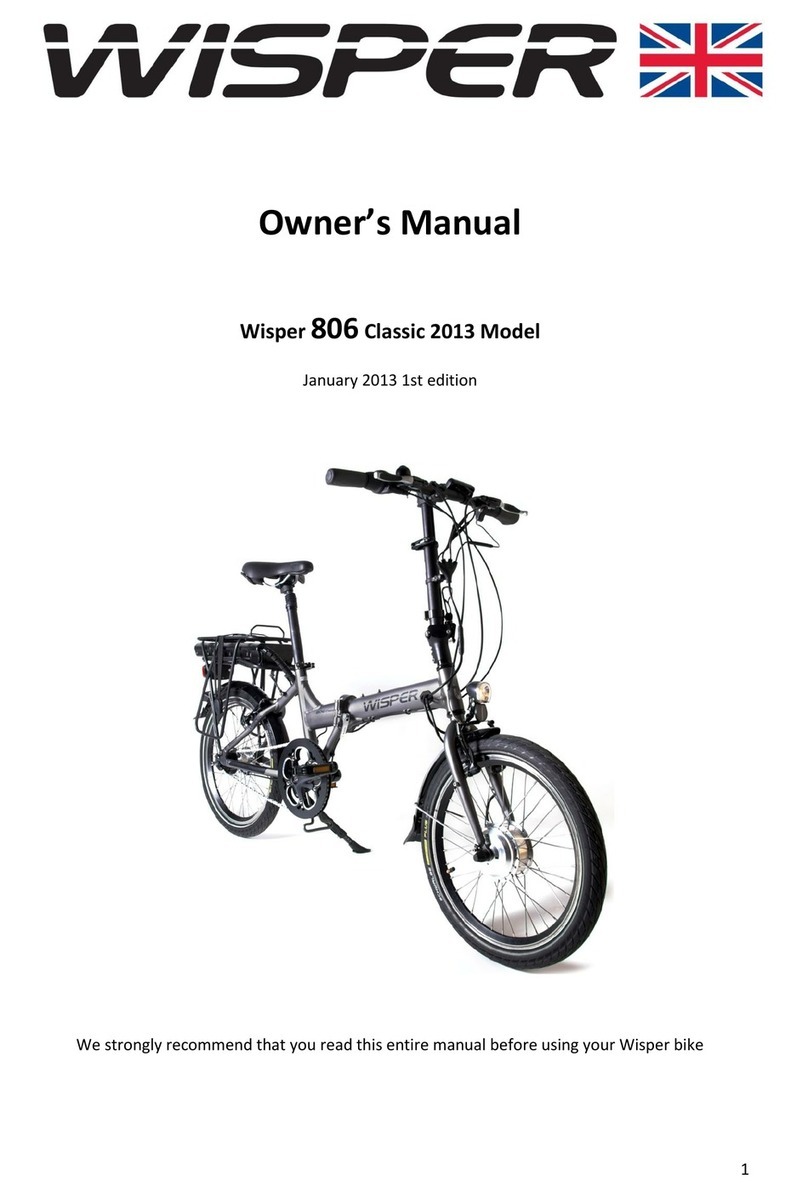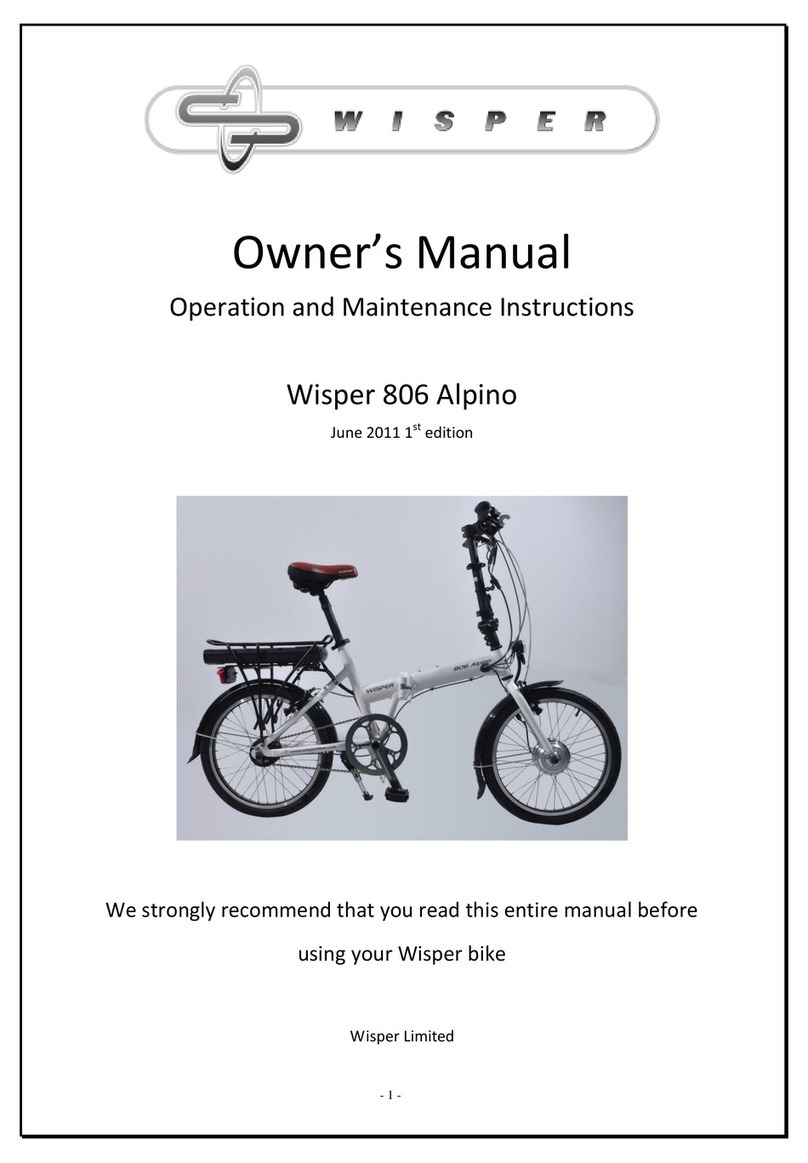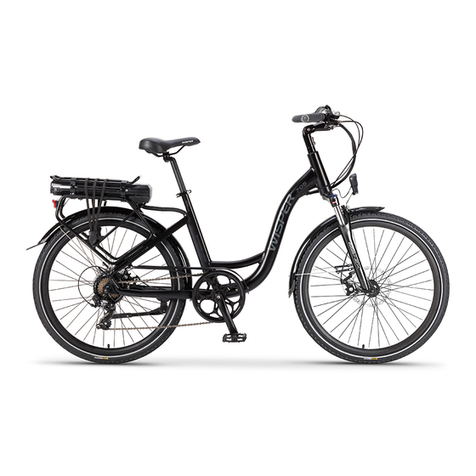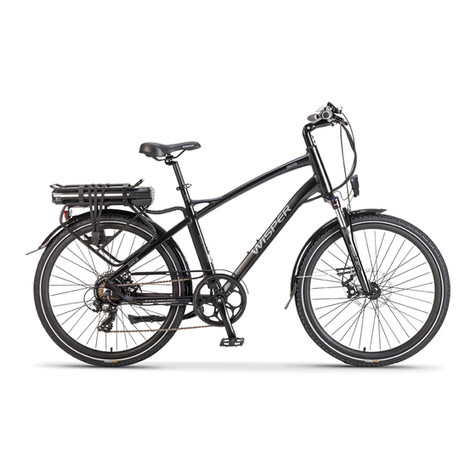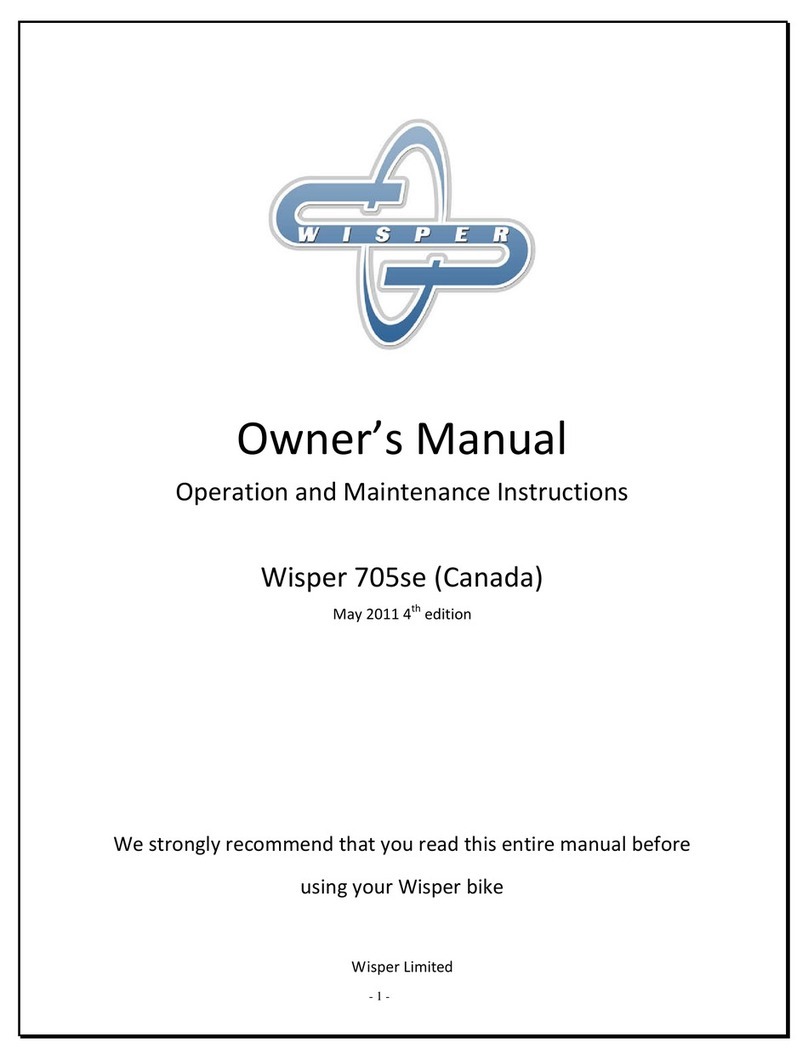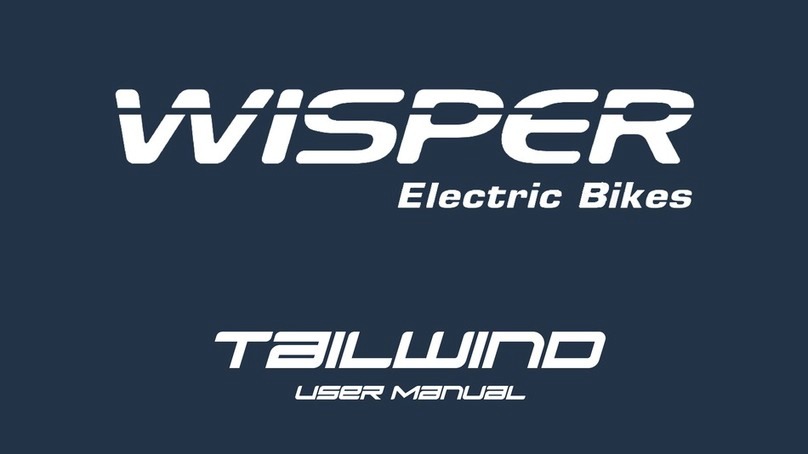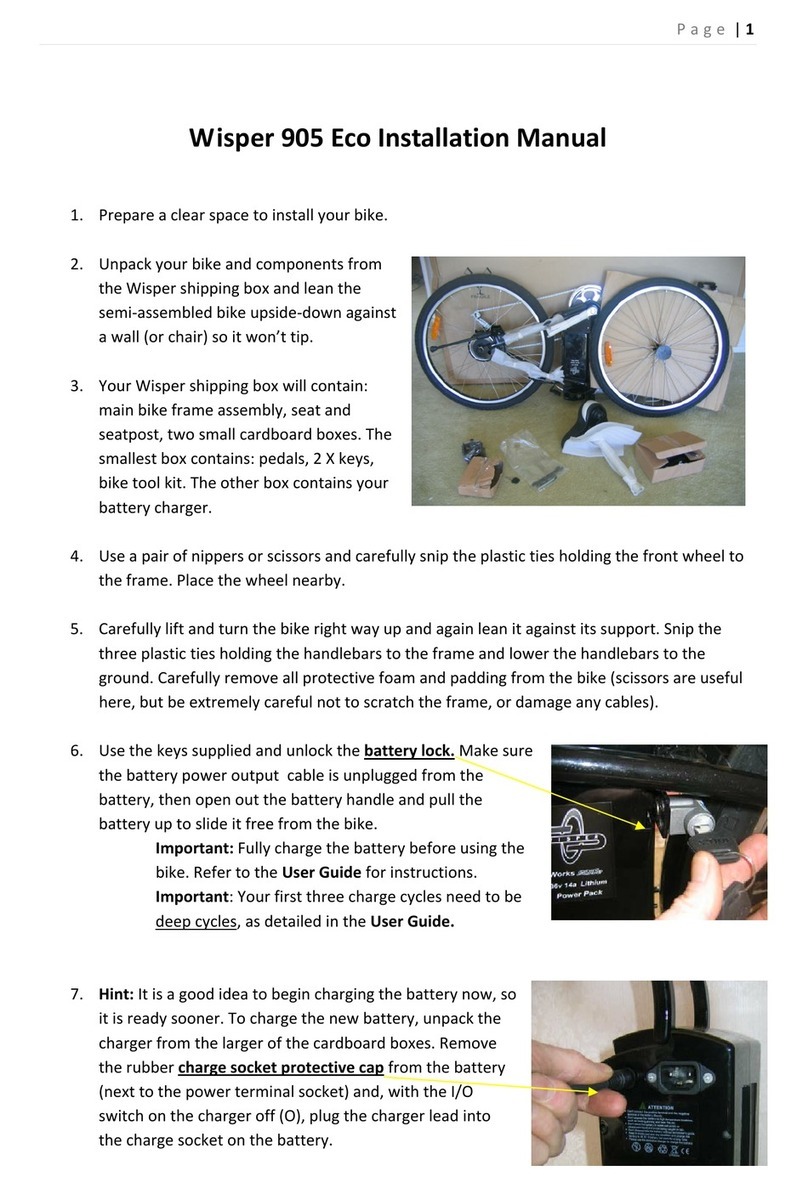1. Introduction 5..........................................................................................
2. Caring for your Wisper bike and pre-use checks 6................................................
2.1. Before you set off for the first time 7.........................................................
2.2. Before each use 8.................................................................................
2.3. Battery care 8......................................................................................
2.4. Recharging your battery 10......................................................................
2.5. Water 10
2.6. Maintenance and adjustments 10...............................................................
2.7. Technical specifications & performance 11...................................................
Motor High efficiency, 250W ultra hi torque 50Nm brushless rear wheel drive.................
11
Hybrid Torque drive system designed to deliver maximum power to !...........................
......................................................................................................
the rear wheel smoothly, quietly and efficiently. 11 ........................................
Battery ......................................................................................................
Samsung Lithium with advanced battery management system (BMS) 11.................
36V 375Wh 11...............................................................................................
Battery case Polycarbonate/ABS mix, non conductive for extra safety, conforms to...........
12
2013 90cm drop test. 12..................................................................................
Controller Sine wave controller for almost silent running...........................................
12
Charger Lithium 42V output intelligent charger communicates with battery....................
12
management system (BMS), auto stop when fully charged 12......................................
2A. Charge time 2.5 to 8hours depending on the battery state. 12................................
Connections All electronic components and motor wheel have individual.......................
12
connectors for ease of servicing 12.....................................................................
Range Average assisted 50miles/80kilometers Max 70miles/115kilometers.....................
12
Modes Pedelec: with 4 levels of assistance power and safe mode...............................
.....................................................................................................
12
Max speed 15.5mph/25kph with powered assistance, this does not affect top speed when..
pedaling 12..................................................................................................
Controls ....................................................................................................
Back lit LCD display panel!with bike and light on/off switch !
Power assistance: four levels 12.........................................................................
Speedo, Range, Trip, Battery state, Clock 12.........................................................
Weight 19.5kg without battery..........................................................................
